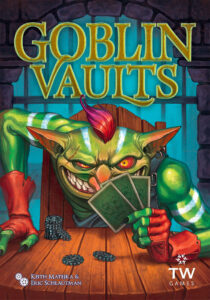 Designer Keith Matejka (and publisher Thunderworks Games) is at it again, delving deeper and deeper into the Roll Player universe, exploring every dark corner. With Goblin Vaults, he’s teamed with designer Eric Schlautman to present a game that exists as a narrative within another game (Roll Player Adventures). So, in a way, this inspiration is akin to narrative tangents such as Gwent (Witcher universe) and Tak (The Kingkiller Chronicle).
Designer Keith Matejka (and publisher Thunderworks Games) is at it again, delving deeper and deeper into the Roll Player universe, exploring every dark corner. With Goblin Vaults, he’s teamed with designer Eric Schlautman to present a game that exists as a narrative within another game (Roll Player Adventures). So, in a way, this inspiration is akin to narrative tangents such as Gwent (Witcher universe) and Tak (The Kingkiller Chronicle).
Does Goblin Vaults have the imagination to exist in a world inhabited by so many card games? Will it stand out against other games in the Roll Player universe? Time to make your bid and stash your loot. There are plenty of gears to collect in the recesses of Kulbak Prison.
Gameplay Overview:
Goblin Vaults is all about collecting the most gears, which is the game’s currency. Players gain these by winning bids on cards with gears that have been placed on them, by having cards in their tableau in specific tiers at game end, and from randomly selected goal cards.
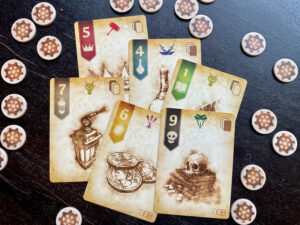
Players begin with ten cards in hand and must play one into their tableau grid, which is a four-column (chamber) and three-row (tier) area in front of players referred to as the Vault. After cards are dealt, a single card is revealed as the Warden card, and three more are placed face-up in an area known as the Block. The Warden card is like a trump card in a trick-taking game, whereas the Block cards are up for bid for the round.
The game is played over nine rounds, of which there are three phases: Scheme, Vault, and Warden. During the Scheme phase, players bid on the cards in the Block. To bid, a player selects one of the cards in their hand and places it below one of the three Block cards that they are vying to add to their Vault. Each card has a numerical value as well as a suit. A higher number wins a bid, whereas a card used for a bid with a suit matching the Warden card is considered a higher value.
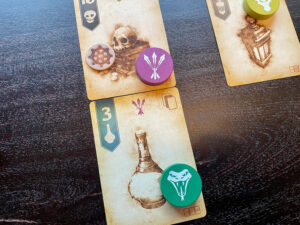
The next player in turn order can try to outbid, bid on one of the other cards, or underbid. During an underbid, the player must have a gear available to place on the current winning bid card, basically giving up an end-game point. An underbid refers to a card of equal or lesser value to the card currently winning the bid. The reason players may do this is because the player who loses a bid gets to add this underbid card to their Vault, instead of the card being bid on.
Once all bids are in, the Vault phase comes next. If there are no bids on a card, a gear is added to it from the supply to increase its appeal. A card with multiple bids has a winner, who takes the card that was bid on and adds it to their Vault, replacing it in the Block with their bid card. And as mentioned above, a player who lost the bid keeps their bid card and adds it to their Vault. The Vault must be filled according to specific guidelines. Tier one of any column is first but adding to the same tier requires players to fill tier two before filling tier three.
The final phase is the Warden phase, which simply allows the first player to choose any of the three cards currently in the Block and swap one of them with the Warden card. Another note about Warden cards is that when used during bidding, they allow a player to take an optional bonus action, which can be used to move a single card around in their Vault, or to discard a card from their hand and add a new one from the draw pile.
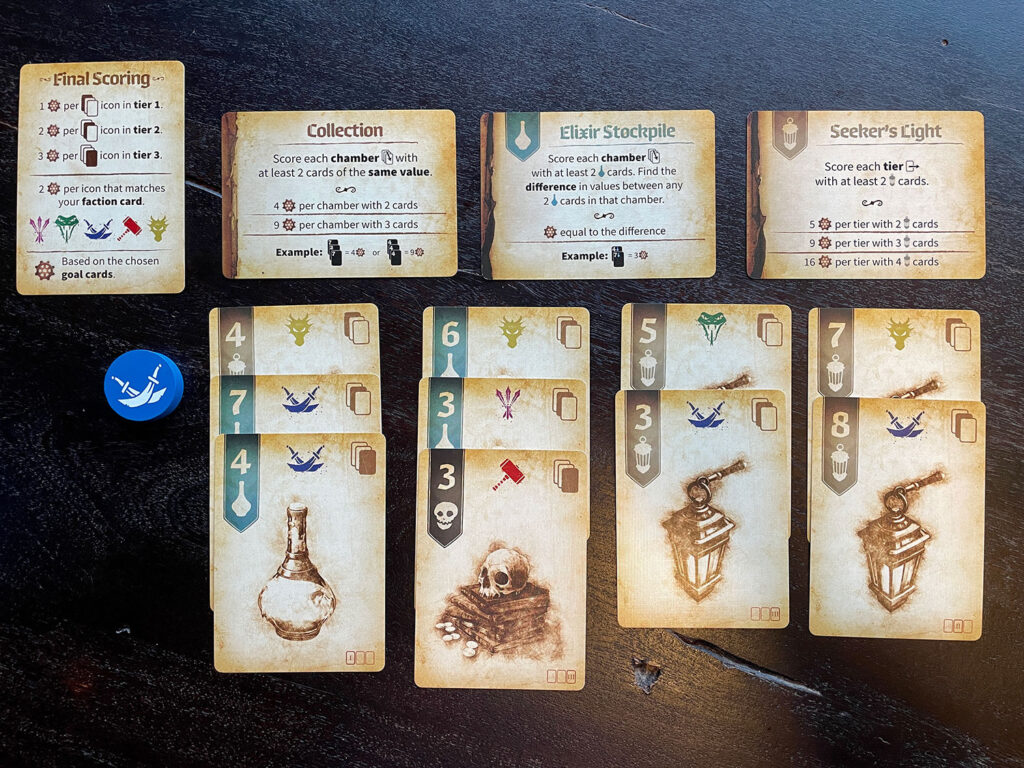
Game Experience:
I wasn’t sure what to expect from a card game derived from the Roll Player universe, and while the thematic nature of this is quite ambiguous, the card play is quite fun. In fact, the restrictive nature of a hand of nine cards that are used for bidding creates an interesting puzzle that is both strategic and tactical. There’s an element of making the best of a situation rather than working toward a grand finale.
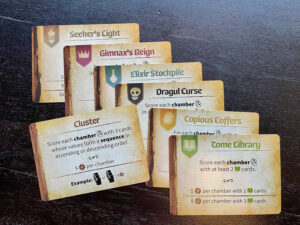
Final scoring was glossed over in the overview, and I wanted to dig into it a little bit here. The way the game requires you to pay attention to several aspects of the cards both in hand and in play keeps players engaged. Each card features a value, a faction icon, and a tier icon. Beyond card suit, each of these features relates to final scoring in different ways. The goal card selected at the beginning of the game provides insight into high scoring opportunities, but the other two add up as well.
Players randomly select their faction before play and every card they add to their Vault with a matching icon provides two gears during final scoring. Also, each card has a tier icon that provides gears based on which row it is located. Taking time to keep end game goal cards and tier scoring in mind is also a fun puzzle that requires calculating the best route for points on more than one occasion. Thankfully the Warden bonus actions allow you to shift cards in your tableau.
There are quite a few smart design ideas here. Having the Warden trump suit option provides a fun wrinkle to what would otherwise be a lackluster bidding affair. In addition, the ability to underbid and retain the card you bid with can provide a lot of incentives. If there’s anything to say about the bidding that’s not as fun, it would be the fact that it happens so quickly and feels unexciting at times when you’re not competing with someone else. This is a very swift game, especially once you’ve gotten a handle on how the phases work.
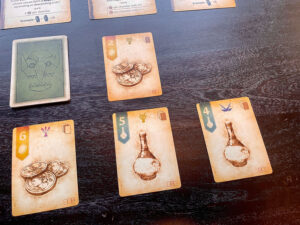
There are several end goal cards in the box which are double sided and provide some variability. There’s also a solo module that is also used in a two-player game to create more tension. It’s simple to use, but not very intuitive, and as such this game is best at three and four players. The solo-only option is okay, especially to learn the rules, but isn’t engaging enough to keep returning to.
As much fun as I’ve had teaching and playing Goblin Vaults, I do question its staying power. The end goal cards have variety, and their combinations create unique styles of gameplay, but beyond that adjustment, most games have a similar arc, and the decision space can start to have less tension. There is an advanced variant in the nicely crafted rulebook that allows you to add more goal cards to increase scoring potential, so at least there is that.
Final Thoughts:
If you do find yourself in Kulbak Prison, and you’re not sure how to bide your time, perhaps seeking out the goblins in the shadows will provide some entertainment. Goblin Vaults is easy to learn, plays in less than forty-five minutes, and keeps players engaged. While the theme may be tailor-made for a very specific Roll Player universe fanbase, it’s nothing that will stop you from enjoying the mechanisms. I’d recommend this for someone seeking a simple bidding tableau-builder with a few twists.
Final Score: 3.5 stars – Locked up for an extended period? There’s no reason not to seek out Goblin Vaults to pass the time.
 Hits:
Hits:
• Bidding mechanism
• Scoring system
• Warden system
Misses:
• Lack of gameplay variety
• Solitary mode
• Thematic ambiguity






















